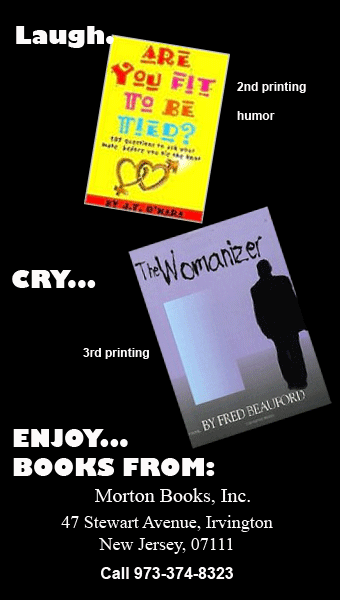REVIEWING
Padre Pio—Miracles and Politics in a Secular Age
by Sergio Luzzatto
Translated by Fredrika Randall
Metropolitan Books
Henry Holt & Company, New York | 2010
Reviewed by Jane M McCabe
.gif)
“For a Capuchin friar hidden away in the half-empty San Giovanni Rotondo monastery on the remote Gargano Peninsula in southern Italy, September 20, 1918, was fateful day. Around nine that morning, while Padre Pio of Pietrelcina was praying before a crucifix in the monastery chapel ‘a mysterious personage’ materialized before him, a figure bleeding from his hands, feet and his side. Alarmed, the thirty-one-year-old priest begged for God’s assistance. The figure disappeared immediately, but Padre Pio’s alarm only grew when he saw that Jesus’ stigmata were now visible on his own body. ‘I look at my hands, feet and side and see they are wounded and blood is pouring out,’ he wrote to his spiritual adviser. ‘All my innards are bloody and my eye must resign itself to watch the blood gushing out,’ so much of it that ‘I fear I will bleed to death.’”
From what Mr. Luzzatto tells us, Padre Pio was a mild-mannered, simple man, not clever enough to have self-mutilated himself to make as though he had received the stigmata. If it were a hoax, it was one perpetrated for fifty years. Since the friar bled profusely from his wounds, if it a hoax he would have soon grown anemic and probably would have bled to death within a few months of receiving them.
For almost exactly fifty years, Padre Pio, the simple Capuchin monk, who died on September 23, 1968, was the object of veneration, ridicule, and contention. As Mr. Luzzatto points out, the autumn of 1918 was “a special moment in the collective awareness, a time heavily in need of the sacred.” The immense trauma of the First World War had ripened the conviction that it had been one never ending crucifixion in which the soldiers’ suffering would redeem mankind.
“Let me be clear right way,” the author writes, “that this study does not intend to establish once and for all whether Padre Pio’s wounds were genuine stigmata, or whether the works he did were genuine miracles. All those seeking answers—affirmative or negative—as to whether the stigmata or the miracles were ‘real’ had better close this book right now. Padre Pio’s stigmata and his miracles interest us less for what they tell us about him than for what they tell us about the world around him: the many-colored world of priests and friars, of clerics and laymen, of the good and the bad and the shrewd and the simple, of those who believed in the stigmata and the miracles and those who refused to believe. Sainthood is a social custom made up of rite of inaction; saints matter as much for how they appear as for what they are.”
At the close of the nineteenth century, secular intellectuals hurriedly proclaimed the end of religion and disenchantment with belief in miraculous happenings. So, for the hierocracy of the Roman Catholic Church to have a friar with stigmata was almost an embarrassment.
For some fifty years until his death in 1968, Padre Pio never moved from San Giovanni Rotondo in southern Italy. But all around him the men of the church and events in the world moved at a rapid pace.
The lowly status of Italy in the 20th Century would be less pathetic had it never been great, but of course, from the last century BC to the Fifth Century AD Italy was the seat of the Roman Empire and the most powerful and influential realm on earth. How then could a civilization that had risen to such heights have fallen into such disrepute?
Like people, civilizations grow old and lose their vitality. Such as been the fate of many. The Roman Empire lasted for over 500 years, the Byzantine for 1,000, the Spanish and British Empires about two hundred years; all long enough to dramatically change the face of the world. By this rule, the United States is still relatively young, less than 250 years if you count from 1776, but things have so speeded up in the last few decades that we’ve lived through more extreme changes in 50 years than our ancestors lived through in 250, and therefore our country has aged more quickly than it would have had not the pace of things so quickened. The Roman Empire is the prototype by which we measure the decline of civilizations.
By 410 AD, the magnificent Roman civilization that came into its prime under Caesar Augustus in the first century AD was overrun by hordes of barbarians, who, finding the Italian peninsula to their liking, settled and became part of its culture.
Still, we wonder how it is that a once powerful civilization that set the standards for culture and innovation could have fallen so low.
Italy, in the first part of the 20th Century, before Mussolini’s rise to power, was divided not only geographically between north and south, but culturally, as well; the people in the north tended to be more prosperous, better educated and more secular in their views. They had internalized the scientific, rational attitudes from the Enlightenment, while those in the south clung to Catholicism and tended to be more poor, primitive and superstitious.
The Roman Catholic Church dominated the political life and had grown into a baroque and labyrinthine institution. Its attitude towards a simple friar in the south who had the stigmata was ambivalent, sometimes hostile and sometimes tolerant, more often a cause for embarrassment than pride.
The story of Padre Pio would make good fodder for a satire by Moliere, as he served as a foil to surrounding forces. In the 1920’s there were Italians who, aware of Italy’s former glory, yearned for a leader and government who would help restore her to her former glory. A similar situation existed in Germany, which was yoked with the humiliation of having been defeated in World War I and with the retributions levied in the Versailles Treaty, all which made these countries ripe for strong, if misguided, leaders. Enter Mussolini and Hitler.
Mussolini and his Fascist party believed that extreme measures were needed to redeem Italy, like a boxer whose time was spent, but nevertheless underwent a vigorous, disciplined regime of exercise in the belief that in so doing he could recover his previous strength.
I have taken the following paragraph on Mussolini’s religious beliefs from Wikipedia:
“Mussolini was raised by a devoutly Catholic mother and an anti-clerical father. His mother Rosa had him baptized into the Roman Catholic Church and took her children to services every Sunday. His father never attended. Mussolini regarded his time at a religious boarding school as punishment, compared the experience to hell, and ‘once refused to go to morning mass and had to be dragged there by force’. Mussolini would become anti-clerical like his father. As a young man, he ‘proclaimed himself to be an atheist and several times tried to shock an audience by calling on God to strike him dead.’ He denounced socialists who were tolerant of religion or who had their children baptized. He believed that science had proven there was no God, and that the historical Jesus was ignorant and mad. He considered religion a disease of the psyche and accused Christianity of promoting resignation and cowardice.
Mussolini was an admirer of Friedrich Nietzsche. According to Denis Mack Smith, ‘In Nietzsche he found justification for his crusade against the Christian virtues of humility, resignation, charity, and goodness.’ He valued Nietzsche's concept of the superman, ‘The supreme egoist who defied both God and the masses, who despised egalitarianism and democracy, who believed in the weakest going to the wall and pushing them if they did not go fast enough.’ Mussolini made vitriolic attacks against Christianity and the Catholic Church, ‘which he accompanied with provocative and blasphemous remarks about the consecrated host and about a love affair between Christ and Mary Magdalena.’ He believed that socialists who were Christian or who accepted religious marriage should be expelled from the party. He denounced the Catholic Church for ‘its authoritarianism and refusal to allow freedom of thought...’ Mussolini's newspaper, La Lotta di Classe, reportedly had an anti-Christian editorial stance.
Despite making such attacks, Mussolini would try to win popular support by appeasing the Catholic majority in Italy. In 1924, Mussolini saw that three of his children were given communion. In 1925, he had a priest perform a religious marriage ceremony for himself and his wife Rachel, whom he had married in a civil ceremony 10 years earlier. On February 11, 1929, he signed a concordat and treaty with the Roman Catholic Church. Under the Lateran Pact, Vatican City was granted independent statehood and placed under Church law—rather than Italian law—and the Catholic religion was recognized as Italy's state religion. The Church also regained authority over marriage, Catholicism could be taught in all secondary schools, birth control and freemasonry were banned, and the clergy received subsidies from the state, and was exempted from taxation. Pope Pius XI praised Mussolini, and the official Catholic newspaper pronounced ‘Italy has been given back to God and God to Italy.’ However, after this conciliation, he claimed the Church was subordinate to the State, and ‘referred to Catholicism as, in origin, a minor sect that had spread beyond Palestine only because it was grafted onto the organization of the Roman Empire.’ After the concordat, ‘he confiscated more issues of Catholic newspapers in the next three months than in the previous seven years.’ Mussolini reportedly came close to being excommunicated from the Catholic Church around this time.’”
The Fascists, coming to power under Mussolini’s direction, believed that extreme measures were needed to restore Italy.
I did not find Padre Pio to be very legible, perhaps because I wasn’t interested in the details surrounding his life. What interested me was, apart from his stigmata and relatively uneventful life, the events and culture that surrounded him, the larger picture of what happened in Italy during the first part of the 20th Century.
The rest is history. Mussolini aligned himself with Hitler and Nazism, and Italy became part of the Axis powers, which were defeated by the Allied forces, precipitating his downfall, execution and Italy’s subsequent humiliation.
When in high school, we had an Italian foreign exchange student named Bruno. Mind you, I really didn’t know a thing about history then, but when I asked him about Mussolini (I was a smart-ass then) he grimaced, looked at the ground and said, “Mussolini is dead.”
As far as Padre Pio was concerned, he lived quietly and breathed his last on September 23, 1968, well after Mussolini’s time and the Fascists’ fall from grace. His body showed no marks of the wounds he once bore—they were completely healed and showed no scars. On Sunday, May 2, 1999, with more than a million of the faithful from all over the world gathered before him, Pope John Paul II celebrated the beatification of Padre Pio. No longer a threat to the Roman Catholic Church, he was canonized and recognized as a saint.





